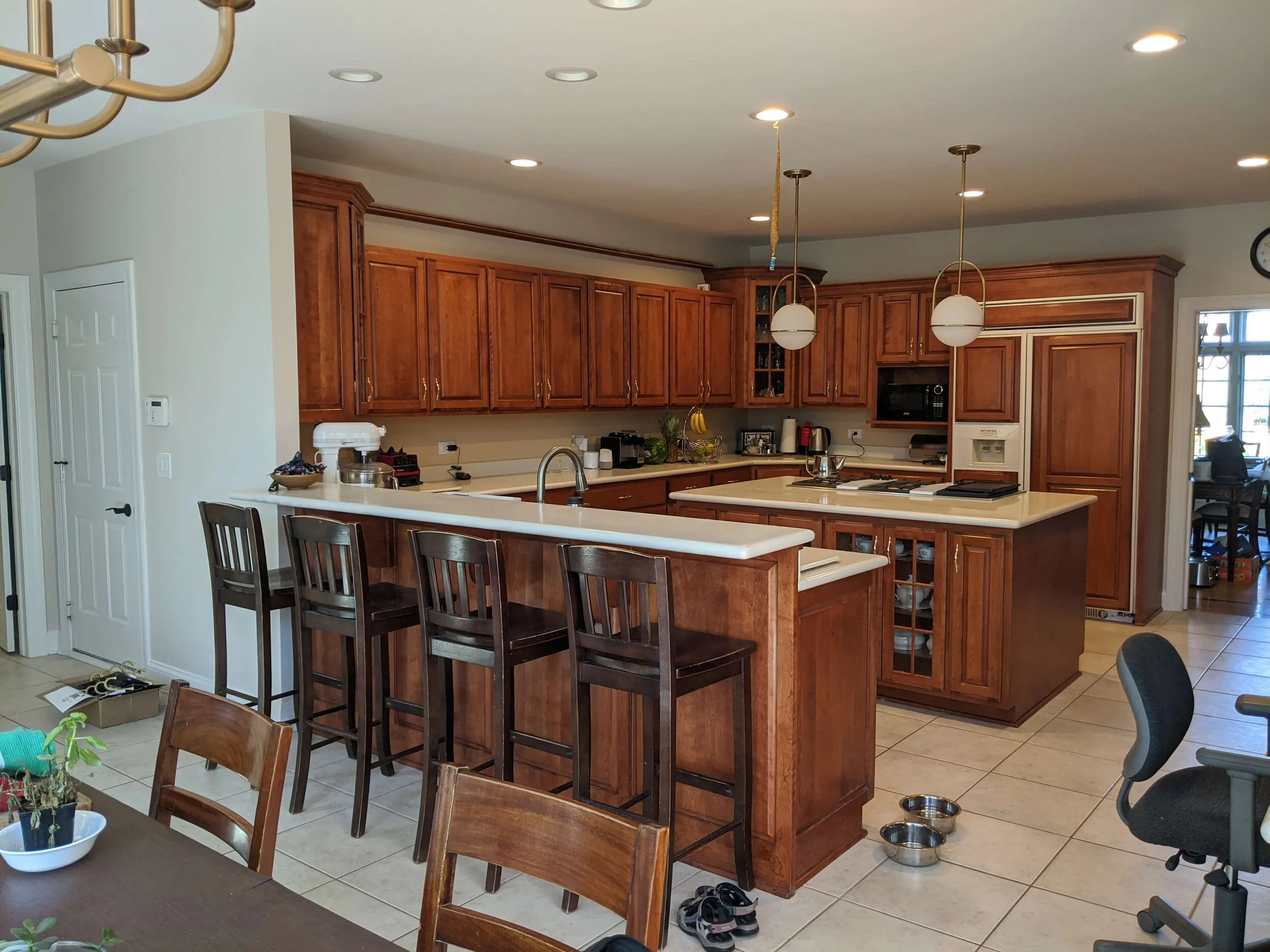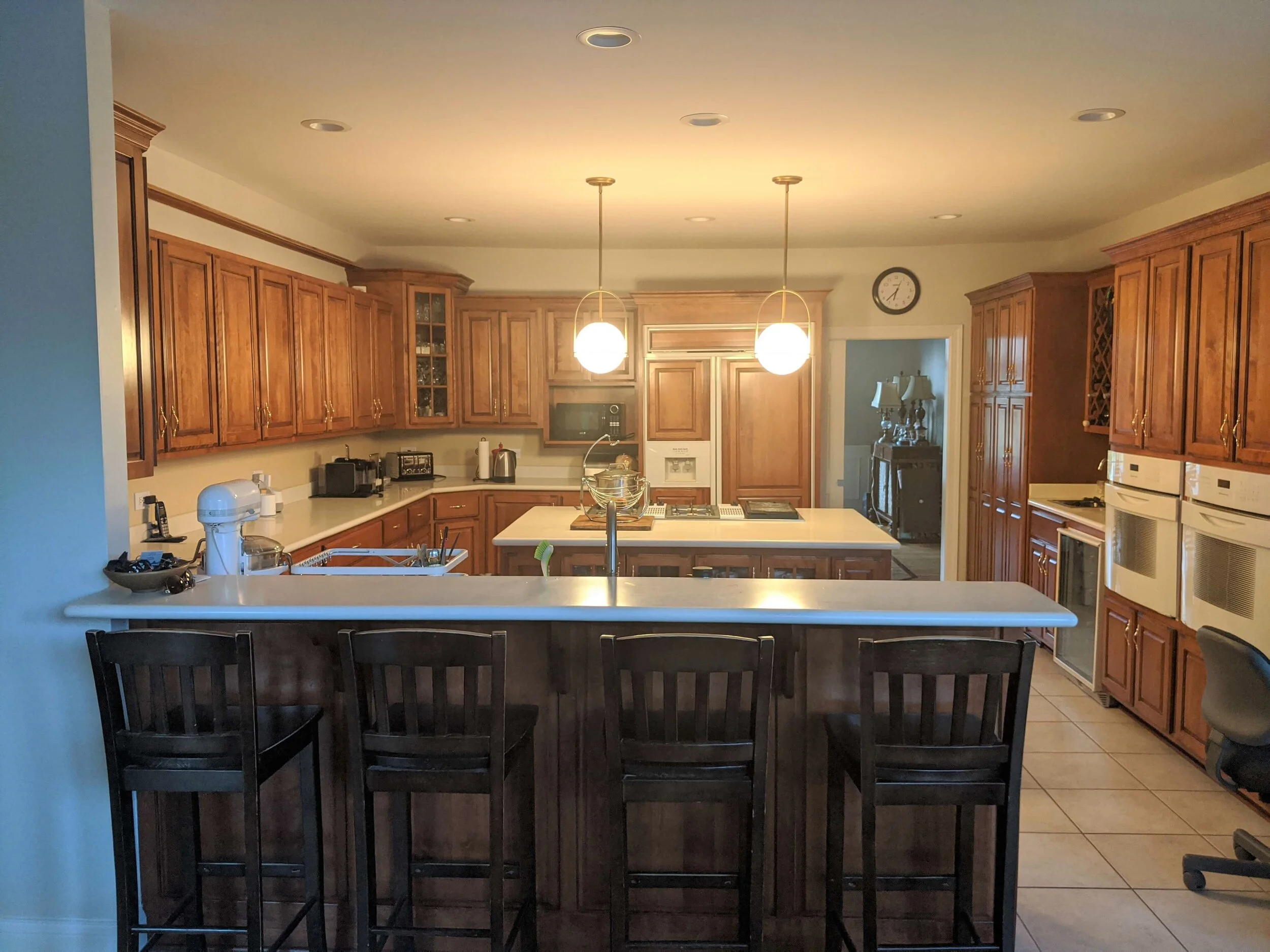Refacing Maple Cabinets
Embark on a transformative journey, breathing new life into your maple cabinets without the commitment of a full repaint. Refacing offers a cost-effective and surprisingly straightforward path to a kitchen refresh, allowing you to maintain the inherent quality of your existing cabinetry while achieving a dramatically altered aesthetic. This process involves replacing the cabinet doors, drawer fronts, and sometimes the face frames with new materials, instantly updating the look and feel of your space.
Refacing Maple Cabinets: A Step-by-Step Process
The initial phase involves careful preparation and removal of the existing doors and drawer fronts. This requires patience and precision. Begin by carefully removing the hinges from the cabinet doors. Numbering each door and hinge location with a pencil will be invaluable during reassembly. Next, gently detach the doors from the cabinet boxes. Drawer fronts are usually secured with screws; remove these, taking care not to strip the screw heads. Photographing each step is highly recommended, providing a visual guide for reinstallation. Once all the doors and drawer fronts are removed, thoroughly clean the cabinet surfaces to ensure optimal adhesion of the new facing material.
Refacing Materials: A Comparative Analysis
Choosing the right refacing material is crucial for achieving both aesthetic and functional success. Several options exist, each with its own unique set of advantages and disadvantages.
| Material | Cost | Durability | Aesthetic Appeal |
|---|---|---|---|
| Wood Veneer | Medium to High | High; can be repaired | Classic, natural look; wide variety of wood grains and stains available |
| Laminate | Low to Medium | Medium; susceptible to chipping and scratches | Modern, clean look; wide range of colors and patterns |
| Vinyl | Low | Low; prone to wear and tear | Versatile; wide range of colors, patterns, and textures; can mimic other materials |
Tools and Equipment for Successful Refacing
A successful refacing project requires the right tools. This includes a measuring tape, pencil, safety glasses, screwdriver set (including both Phillips and flathead), wood glue, clamps, a jigsaw (for cutting veneer or laminate), utility knife, sandpaper (various grits), and a router (optional, for creating decorative edges). Depending on the chosen material, you may also need specialized tools for application, such as a heat gun for vinyl. Having the right tools ensures a smoother and more efficient process.
Preparing Cabinet Surfaces for Refacing
Before applying the new facing, meticulous preparation is key. Any existing damage to the cabinet surfaces should be repaired. Fill any gaps or holes with wood filler, allowing it to dry completely before sanding smooth. Thoroughly clean the surfaces with a degreaser to remove any dirt, grease, or old adhesive residue. This ensures optimal adhesion and prevents peeling or bubbling of the new material. Sanding the surfaces lightly will also improve the bond.
Achieving a Professional Finish: Edge Banding and Finishing Touches
Edge banding is crucial for a professional finish. This involves applying edging material to the exposed edges of the refaced doors and drawer fronts. Wood veneer often requires using an iron to activate adhesive, while laminate may use adhesive tape. After applying the edging, carefully trim any excess with a sharp utility knife. For a truly polished look, consider using a router to create a decorative edge profile. Finally, apply a suitable sealant or finish to protect the new facing material and enhance its durability. This might involve a clear coat of polyurethane or a stain, depending on the chosen material and desired aesthetic.
Updating Maple Cabinet Hardware and Accessories
The heart of any kitchen remodel, or even a simple refresh, often lies in the details. While refacing your maple cabinets provides a foundational update, swapping out the hardware and accessories elevates the entire space, injecting personality and modernizing the look. The right hardware can transform dated cabinets into stunning focal points, reflecting your unique style and enhancing the overall aesthetic.
Cabinet Hardware Styles that Complement Maple
Maple’s warm, versatile nature lends itself to a wide array of hardware styles. From sleek and modern to rustic and traditional, the possibilities are endless. Consider the overall style of your kitchen when making your selections. A transitional kitchen might benefit from a blend of styles, while a contemporary kitchen might favor minimalist designs.
- A sleek, brushed nickel pull with a minimalist design, showcasing clean lines and a subtle curve. Its understated elegance complements the natural grain of the maple, creating a sophisticated yet unfussy look. The brushed nickel finish resists fingerprints and offers a durable, long-lasting option.
- A substantial, oil-rubbed bronze cup pull with a slightly ornate detail. This option provides a touch of rustic charm, grounding the maple’s lightness with a sense of warmth and history. The dark bronze contrasts beautifully with the lighter wood tone.
- A simple, polished chrome knob with a spherical shape. This classic design offers a timeless appeal and works well in both traditional and contemporary settings. The reflective surface adds a touch of brightness and complements the maple’s natural luster.
Comparing Hardware Materials: Cost and Benefits
The material of your cabinet hardware significantly impacts both its cost and longevity. Each material offers a unique aesthetic and practical considerations.
| Material | Cost | Benefits | Drawbacks |
|---|---|---|---|
| Metal (Brass, Nickel, Bronze) | Moderate to High | Durable, resistant to damage, wide variety of finishes | Can be more expensive than other options |
| Ceramic | Moderate | Unique aesthetic, often handcrafted, adds a touch of elegance | Can be fragile, requires careful handling |
| Glass | Low to Moderate | Adds a touch of modern sophistication, available in various colors and textures | Can be easily broken, requires careful cleaning |
Updating Cabinet Hinges and Soft-Close Mechanisms
Replacing outdated hinges with new, high-quality hinges can dramatically improve the functionality and appearance of your cabinets. Consider upgrading to soft-close hinges for a smoother, quieter closing action. This subtle upgrade significantly enhances the user experience and adds a touch of luxury. The cost is relatively low compared to the overall project, yet the improvement in daily use is substantial. For example, a family with young children might appreciate the quieter closing action preventing loud bangs.
Planning and Installing New Cabinet Hardware
Before beginning, meticulously measure your existing hardware to ensure accurate replacement. Create a detailed plan, sketching the placement of new hardware to maintain symmetry and balance. This preparation minimizes errors and ensures a professional-looking result. For refinishing existing hardware, consider stripping the old finish with a chemical stripper, sanding, and then applying a new finish.
Step-by-Step Guide to Installing New Cabinet Hardware
- Remove old hardware using a screwdriver or other appropriate tool.
- Clean the cabinet surfaces thoroughly to remove any residue or old adhesive.
- Position the new hardware, ensuring it is level and aligned.
- Mark the screw holes and pre-drill pilot holes if necessary.
- Attach the new hardware using the appropriate screws.
- Inspect the installation for stability and alignment.
Restoring and Enhancing the Natural Beauty of Maple Cabinets: Updating Maple Cabinets Without Painting
Unlocking the inherent elegance of your maple cabinets doesn’t require a complete overhaul. With careful restoration, you can unveil the rich warmth and subtle grain patterns that make maple such a prized wood. This process involves a series of steps, from gentle cleaning to the application of a protective finish, all aimed at revitalizing the natural beauty of your cabinets.
Cleaning and Preparation
Before any enhancement can begin, a thorough cleaning is paramount. Start by dusting the cabinets with a soft cloth or brush to remove loose dirt and debris. For stubborn grime, a solution of mild dish soap and warm water, applied with a soft sponge, will effectively remove surface dirt without harming the wood. Rinse thoroughly with clean water and dry immediately with a soft, lint-free cloth. Allow the cabinets to dry completely before proceeding to the next step. This meticulous cleaning forms the foundation for a successful restoration.
Enhancing Wood Color and Grain with Cleaners and Conditioners
Once the cabinets are clean and dry, you can begin enhancing the wood’s natural beauty. Wood cleaners, specifically formulated for maple, gently remove ingrained dirt and restore the wood’s luster. Follow the manufacturer’s instructions carefully, as application methods may vary. After cleaning, a wood conditioner helps to nourish the wood, replenishing its moisture content and improving its overall appearance. Conditioners penetrate the wood’s pores, enriching the color and making the grain more prominent. Allow the conditioner to soak in completely before proceeding. This two-step process revitalizes the maple, bringing out its inherent richness.
Repairing Minor Scratches and Dents, Updating maple cabinets without painting
Maple, while durable, is susceptible to minor scratches and dents. Fortunately, these imperfections can often be repaired. For shallow scratches, a fine-grit sandpaper (220-grit or higher) can be used to gently sand the area, working in the direction of the wood grain. For deeper scratches or dents, a wood filler matched to the maple’s color can be used. Apply the filler according to the manufacturer’s instructions, allowing it to dry completely before sanding smooth. This careful repair work seamlessly blends imperfections, restoring the cabinet’s smooth surface.
Applying a Clear Coat Finish
A clear coat finish provides lasting protection and enhances the maple’s natural beauty. Several options exist, including polyurethane, varnish, and shellac. Each finish offers different levels of durability and sheen. Polyurethane is a popular choice for its durability and resistance to water damage. Before applying the finish, ensure the cabinets are clean and free of dust. Apply thin, even coats, allowing each coat to dry completely before applying the next. Sand lightly between coats with fine-grit sandpaper to create a smooth, even finish. This protective layer safeguards your restored cabinets for years to come.
Addressing Common Issues: Water Damage and Discoloration
Maple cabinets, while beautiful, are not immune to problems. Addressing these issues promptly prevents further damage.
- Water Damage: Water rings or swelling indicate water damage. Mild cases can be addressed by gently sanding the affected area and reapplying a clear coat. Severe damage may require professional intervention.
- Discoloration: Sun exposure can lead to fading or yellowing. Using UV-blocking window treatments can help prevent further discoloration. For existing discoloration, a wood bleaching agent may help restore the original color, but this should be approached cautiously and always tested in an inconspicuous area first.
- Scratches and Chips: As previously mentioned, minor scratches can be sanded out. Deeper chips may require wood filler. For significant damage, professional repair may be necessary.



